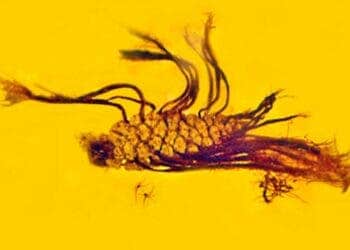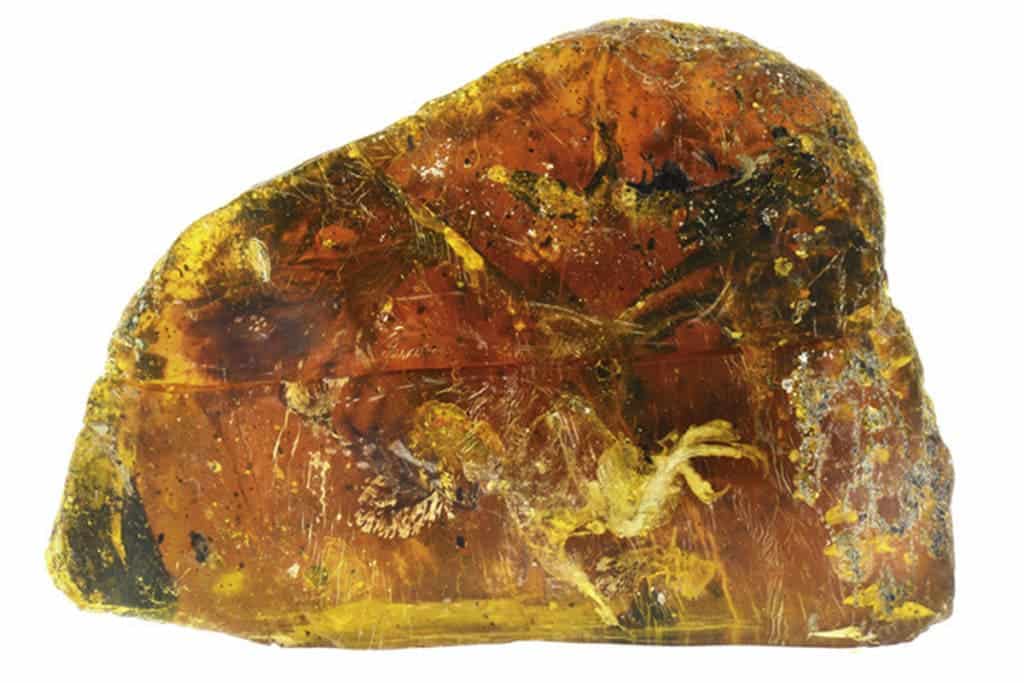
Usually, it’s insects that get trapped in amber, like the Jurassic Park mosquitos which served to revive the dinosaurs. But sometimes we get lucky and come across something different — something that’s even more interesting that the best fiction. This time around, scientists were amazed to find a hatchling trapped in a 100-million-year-old amber collected from Myanmar. It looks like the most well preserved ancient bird ever. The footage below speaks for itself.
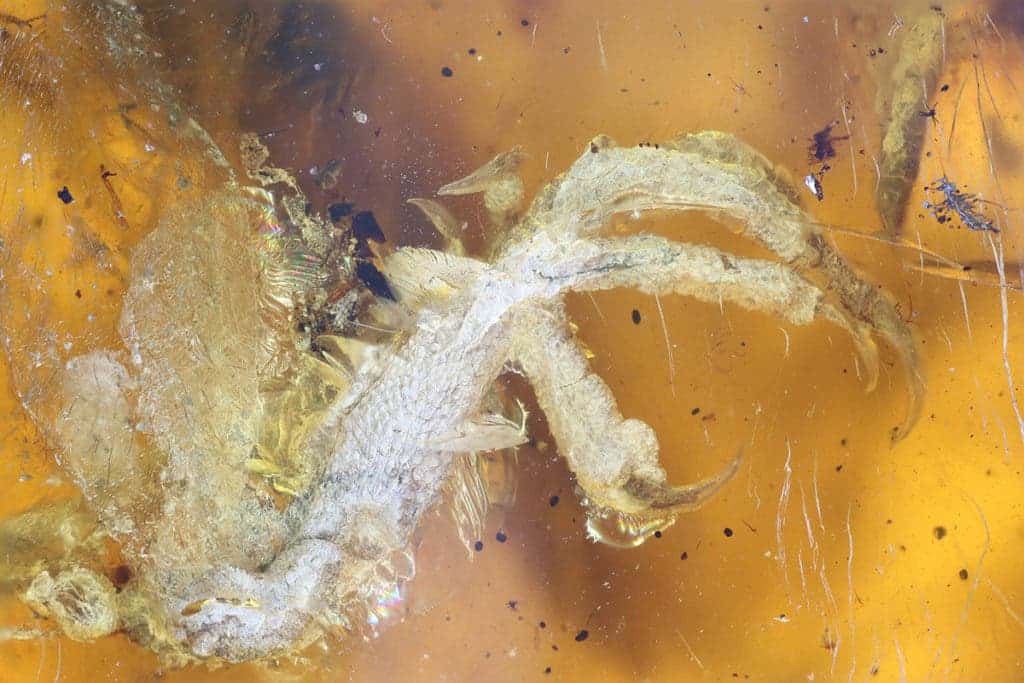
Amber first starts as a simple resin, a reddish, viscous liquid that flows out of a diseased or damaged tree. Not all trees produce the kind of resin that can eventually become amber. In the Dominican Republic, for example, an extinct leguminous tree is responsible for the area’s 16-million-year-old amber fossils.
When an animal comes along — whether an insect or even some larger animal — it gets stuck in the resin flow. Sometimes, if the animal is small enough, the flow or resin is large enough to engulf and eventually preserve the whole animal. For larger animals, most of the time, only parts of them may become preserved.
After the animal is trapped, the resin polymerizes and hardens through a chemistry that’s not completely understood yet. If the pressure and temperature are just right, the resin transforms into a semi-fossilized substance called copal and later some other process turns copal into amber. This takes at least two million years. Fraudsters on the streets of Morocco or Myanmar will often peddle copal as the older and far more valuable amber.
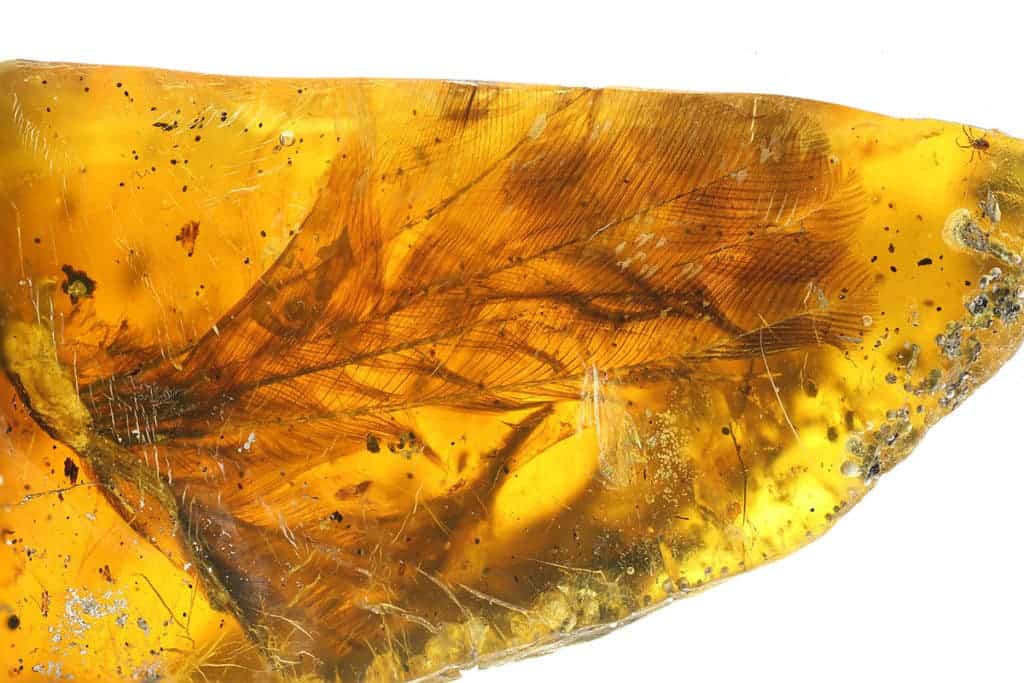
What makes amber fossils so amazing and valuable to science is that unlike mineralized — the kind you see at a natural history museum, dinosaur bones and so on — amber can preserve the soft tissue like the animal’s brain or other parts of the nervous system. For instance, we’ve found amber fossils like a flower caught right in the act of reproduction, ancient species of cockroaches, mammal blood or spiders locked in combat — and they’re all millions of years old, but here we are seeing them as if they were still alive. This is why amber is one of the most valuable time capsules out there, a golden tomb.
This 100-million-year-old trapped hatchling comes preserved in pristine condition. It contains the head, neck, wing, tail, and feet of the hatchling which couldn’t have been more than a couple days older when it got trapped in resin.
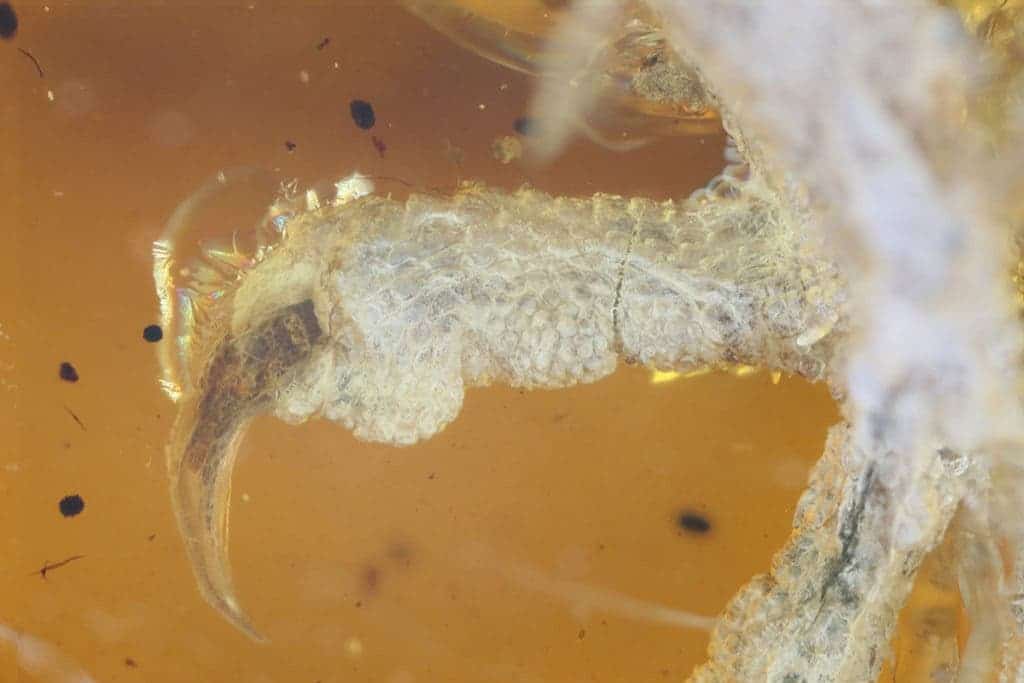
These images are striking. But we mustn’t be fooled, either. Though it might look like we’re seeing flesh, claws or skin, what we’re really seeing are their impressions. All that tissue has been broken down into carbon. It follows there’s no usable DNA either. That Jurassic Park DNA from dinosaur blood is just not gonna happen in the real world.
The hatchling, which the researchers named ‘Belone’ after a Burmese name for the amber-hued Oriental skylark, belonged to an extinct group of birds called enantiornithes, also known as ‘opposite birds’. These lived alongside the ancestors of modern birds but went extinct with the dinosaurs 66 million years ago. Previous fossil evidence suggested that opposite birds hatched with flight feathers, ready to take off from day 1. This present amber gem supports this hypothesis, as the images suggest it had flight feathers and growing tail feathers. And unlike modern day hatchlings, this ancient opposite bird youngster lacked body feathers. Ryan McKellar of the Royal Saskatchewan Museum, Regina, and one of the authors of the new study, says the birds likely hatched on the ground and later climbed into trees which also makes them predisposed to getting stuck in sap.
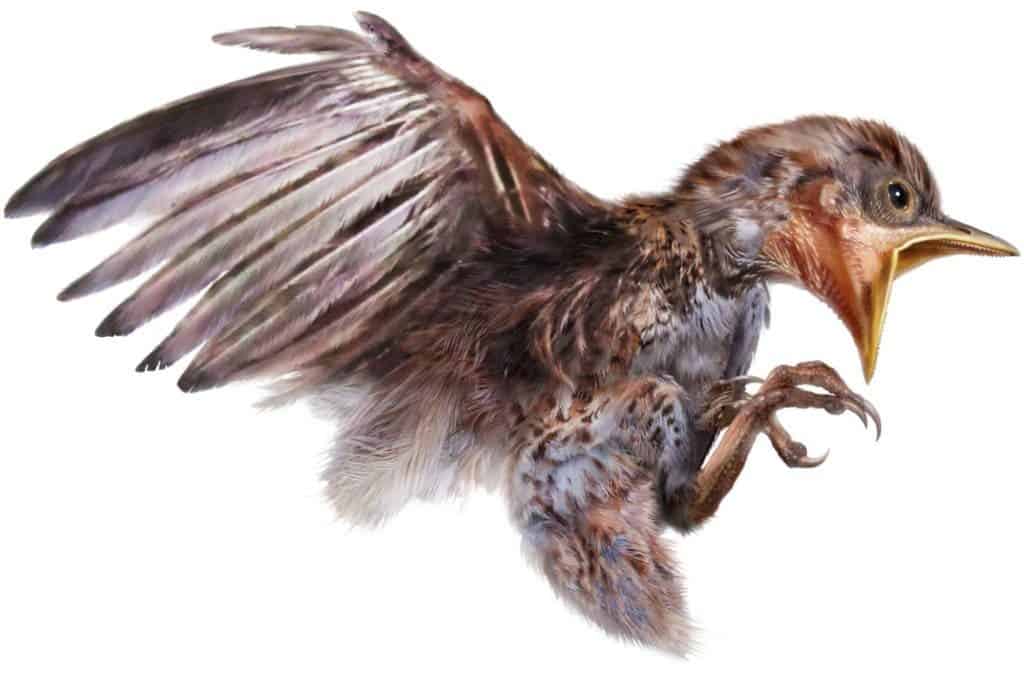
Opposite birds were likely very similar in appearance to modern birds. The main difference between the two is that where modern birds have a ball-and-socket joint to connect their shoulders, opposite birds had a socked-and-ball joint. That’s where the name comes from. Some other notable differences include having jaws and teeth instead of the modern bird’s beak and the presence of claws on their wings.
It’s not clear why opposite birds went extinct along with the dinosaurs. Some speculate it’s because opposite birds didn’t seem to offer parental care whereas modern birds almost unanimously all do.



